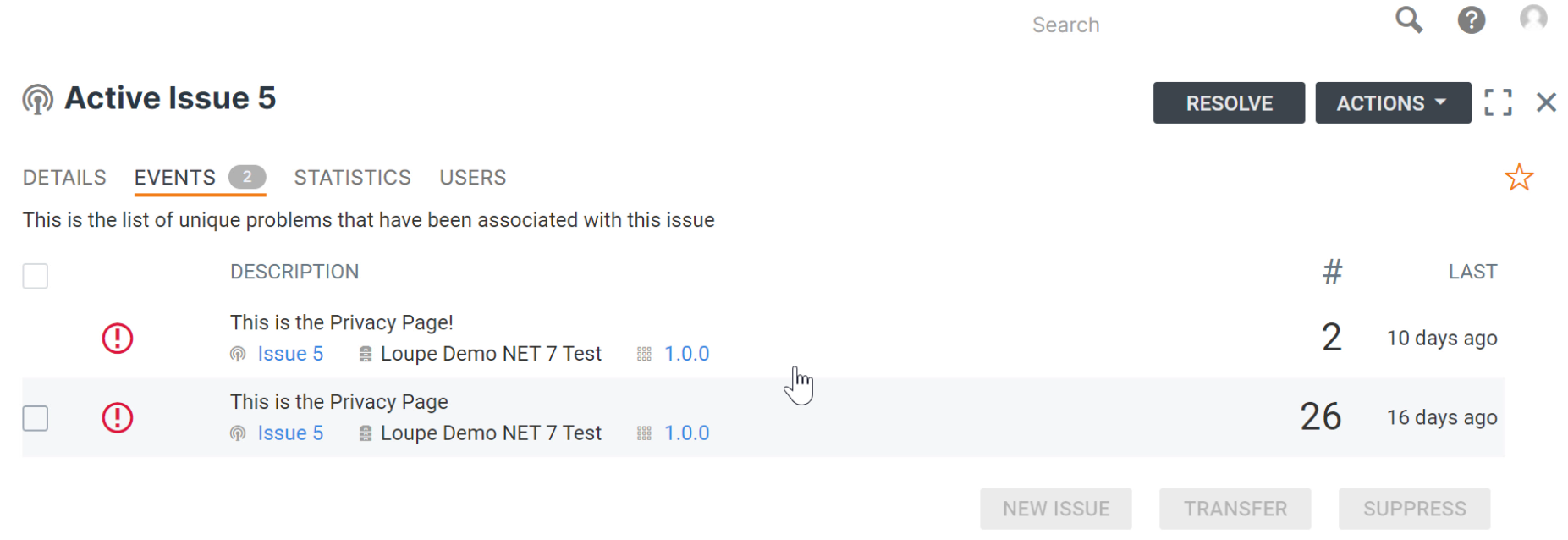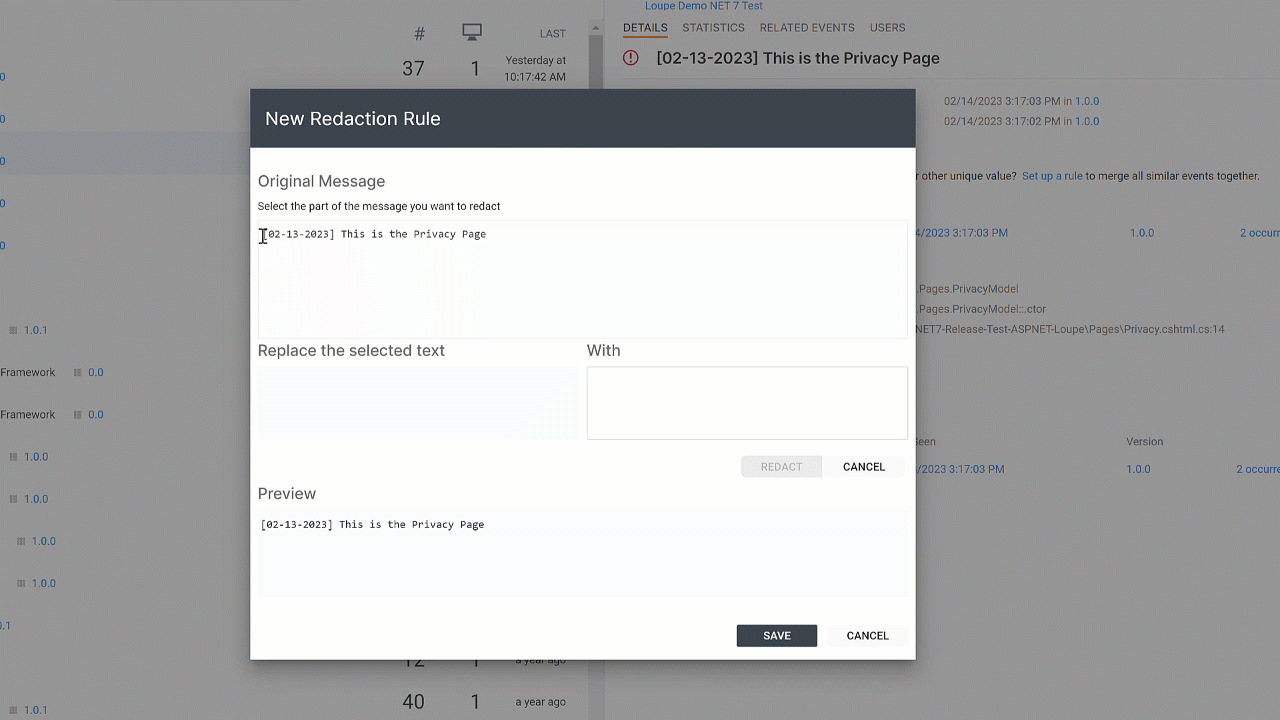Effective Defect Tracking for Difficult .NET Applications
Recently we went over using Loupe Resolve for first-time users. But Loupe Resolve has advanced features for working with more demanding applications with intense amounts of errors and logs.
Here we will cover some of the finer features of Loupe Resolve that help you manage unwieldy log data. All the examples here are done using a .NET 7 application with the Loupe Agent for .NET Core, but these features apply for any version of .NET Core and .NET Framework.
Don’t Be Afraid to Suppress & Ignore the Noise
If you log a lot (which we recommend), you will likely have a significant amount of contextual data. This data is usually great to have, as it will help you solve big problems. However, when strictly tracking defects, these logs can make a mess of the queues.
If an error or warning doesn’t represent an application defect, you can safely suppress it with Resolve. Suppression doesn’t mean the log is no longer collected; it just means it’s not occupying space in your Events lists.
If you ever want to see the Event again, you can. Suppressed Event logs still will show up as regular logs in Loupe View, where you can Unsuppress the Event:

There are also scenarios where you don’t know whether an Event is important or not. For these situations, Loupe offers the ability to simply ignore Events. It’s sometimes better to admit you don’t have the knowledge necessary to make a decision, and the ignore function allows you to delay it. Any ignored Event will clear the error from the review list but allow it to appear again the next time the error occurs.
Connect Related Errors to the Same Defect When Possible
With Loupe, you can add multiple errors to the same Issue item as one of the available Event triage actions.

Then I can go back to the Issue and see that I have two different errors associated with it:

This relatively simple feature can have a significant impact on difficult defect tracking. The example above combines two similar Events, but it’s sometimes correct to combine different Events. Errors can be a lot like symptoms of a virus: diverse and varied but the result of a singular problem. This feature allows dev teams to organize similar or varied errors under the umbrella of a single defect (Issue).
Let Loupe Truncate Your Log Messages Instead of RegEx
If you find yourself adding multiple errors to the same Issue due to logging syntax issues, Loupe can help you truncate logs for more practical tracking.
Let’s look at these example logs:

These two logs represent the same defect but appear as different errors because I added a date to the message (as these logs were originally intended for a text file). But I can remove the date using a Loupe Redaction Rule:

Redactions don’t take place immediately; some processing time from Loupe is required. But once in action, they should help you significantly reduce the number of individual events. This allows for easier tracking and management if the Event is ever elevated to an Issue.
Redaction rules can be further managed in the general settings under the “Event Redaction” menu.

I can confirm current rules, create new ones, or delete them from here. This menu is the easiest place to access and edit a significant number of rules all at once if needed.
Want to try Loupe Resolve for your Difficult .NET Applications?
Loupe Resolve is built to handle your tricky logging scenarios for better defect handling. The above features and more allow you to organize your error data effectively and get to the heart of application problems. You can give Loupe a try by using our 30-day free trial, which you can learn more about in the link below: